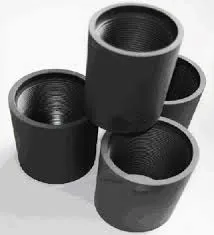- Afrikaans
- Albanian
- Amharic
- Arabic
- Armenian
- Azerbaijani
- Basque
- Belarusian
- Bengali
- Bosnian
- Bulgarian
- Catalan
- Cebuano
- Corsican
- Croatian
- Czech
- Danish
- Dutch
- English
- Esperanto
- Estonian
- Finnish
- French
- Frisian
- Galician
- Georgian
- German
- Greek
- Gujarati
- Haitian Creole
- hausa
- hawaiian
- Hebrew
- Hindi
- Miao
- Hungarian
- Icelandic
- igbo
- Indonesian
- irish
- Italian
- Japanese
- Javanese
- Kannada
- kazakh
- Khmer
- Rwandese
- Korean
- Kurdish
- Kyrgyz
- Lao
- Latin
- Latvian
- Lithuanian
- Luxembourgish
- Macedonian
- Malgashi
- Malay
- Malayalam
- Maltese
- Maori
- Marathi
- Mongolian
- Myanmar
- Nepali
- Norwegian
- Norwegian
- Occitan
- Pashto
- Persian
- Polish
- Portuguese
- Punjabi
- Romanian
- Russian
- Samoan
- Scottish Gaelic
- Serbian
- Sesotho
- Shona
- Sindhi
- Sinhala
- Slovak
- Slovenian
- Somali
- Spanish
- Sundanese
- Swahili
- Swedish
- Tagalog
- Tajik
- Tamil
- Tatar
- Telugu
- Thai
- Turkish
- Turkmen
- Ukrainian
- Urdu
- Uighur
- Uzbek
- Vietnamese
- Welsh
- Bantu
- Yiddish
- Yoruba
- Zulu
what are the differences between casing and tubing?
The Differences Between Casing and Tubing in Oil and Gas Production
In the oil and gas industry, the terms casing and tubing are often used interchangeably by laypersons, but they refer to distinct components with specific purposes in well construction and production processes. Understanding the differences between casing and tubing is crucial for anyone involved in oil and gas operations, from engineers and geologists to investors and policy-makers. In this article, we will explore the definitions, purposes, materials, installation processes, and maintenance considerations of casing and tubing to highlight their differences.
Definitions and Purposes
Casing refers to the series of pipes that are installed in the drilled well to provide structural integrity and protect the wellbore. It is installed after drilling and can be seen as the backbone of the well. The primary purpose of casing is to prevent the walls of the well from collapsing and to isolate different pressure zones in the subsurface. This is critical not only for the efficiency of the operation but also for safety, as it prevents the migration of fluids between geological formations.
On the other hand, tubing is a smaller pipe installed inside the casing. Its primary purpose is to transport oil, gas, and produced fluids from the reservoir to the surface. Unlike casing, which remains in place for the life of the well, tubing may be removed and replaced as needed to maintain production efficiency.
Materials Used
Both casing and tubing are typically made from steel, although various grades and types are available to suit different environments and pressures. Casing is often made from heavier gauge steel to withstand the external pressures of the surrounding earth and to provide the necessary strength to prevent collapse. Tubing, while also made from steel, is usually of a lighter gauge, as it is designed to transport fluids under lower pressures compared to the external pressures experienced by casing.
In certain scenarios, other materials may also be used. For instance, non-metallic materials like fiberglass may be utilized for specific applications, especially in corrosive environments. However, steel remains the most common material due to its durability and strength.
what are the differences between casing and tubing?

Installation Process
The installation processes for casing and tubing differ significantly. After drilling a well, casing is first installed to line the wellbore. This involves running the casing into the well to a predetermined depth, followed by the process of cementing it in place. Cementing is a critical step that creates a seal between the casing and the geological formations, preventing any fluid migration.
Once the casing is installed and cemented, tubing is installed through the casing. This is typically done using a process called completion, where the necessary completion equipment, including perforations in the casing, are put in place to allow it to function correctly. The tubing string is usually connected to the production equipment at the surface.
Maintenance Considerations
Maintenance for casing and tubing also varies considerably. Casing, due to its crucial role in the structural integrity of the well, requires less frequent intervention once cemented. However, if there is any sign of casing failure, it must be addressed immediately to prevent catastrophic blowouts or fluid migration.
In contrast, tubing is subject to wear and tear from the fluids and pressures it transports and may require more regular maintenance and replacement. Issues such as corrosion, scale build-up, or production decline often necessitate the removal and replacement of tubing.
Conclusion
In conclusion, although casing and tubing may appear similar on the surface, their roles in the oil and gas production process are fundamentally different. Casing serves as the structural foundation of the well, ensuring safety and stability, while tubing is a crucial conduit for transporting hydrocarbons to the surface. Understanding these differences is essential for optimizing production and maintaining the integrity of oil and gas operations. Proper selection, installation, and maintenance of both casing and tubing are imperative for the successful operation of any well, significantly impacting overall efficiency and safety in the field.
-
Well Casing Extension Couplings – Applications and InstallationNewsJun.06,2025
-
Types of Crossover Subs in Drilling & CompletionNewsJun.06,2025
-
Key Features of High-Quality Tubing Pup JointsNewsJun.06,2025
-
Installation and Maintenance Tips for Steel Couplings for PipeNewsJun.06,2025
-
How to Select the Right Pup Joint for Oil & Gas OperationsNewsJun.06,2025
-
Applications of Stainless Steel Pipe CouplingsNewsJun.06,2025







